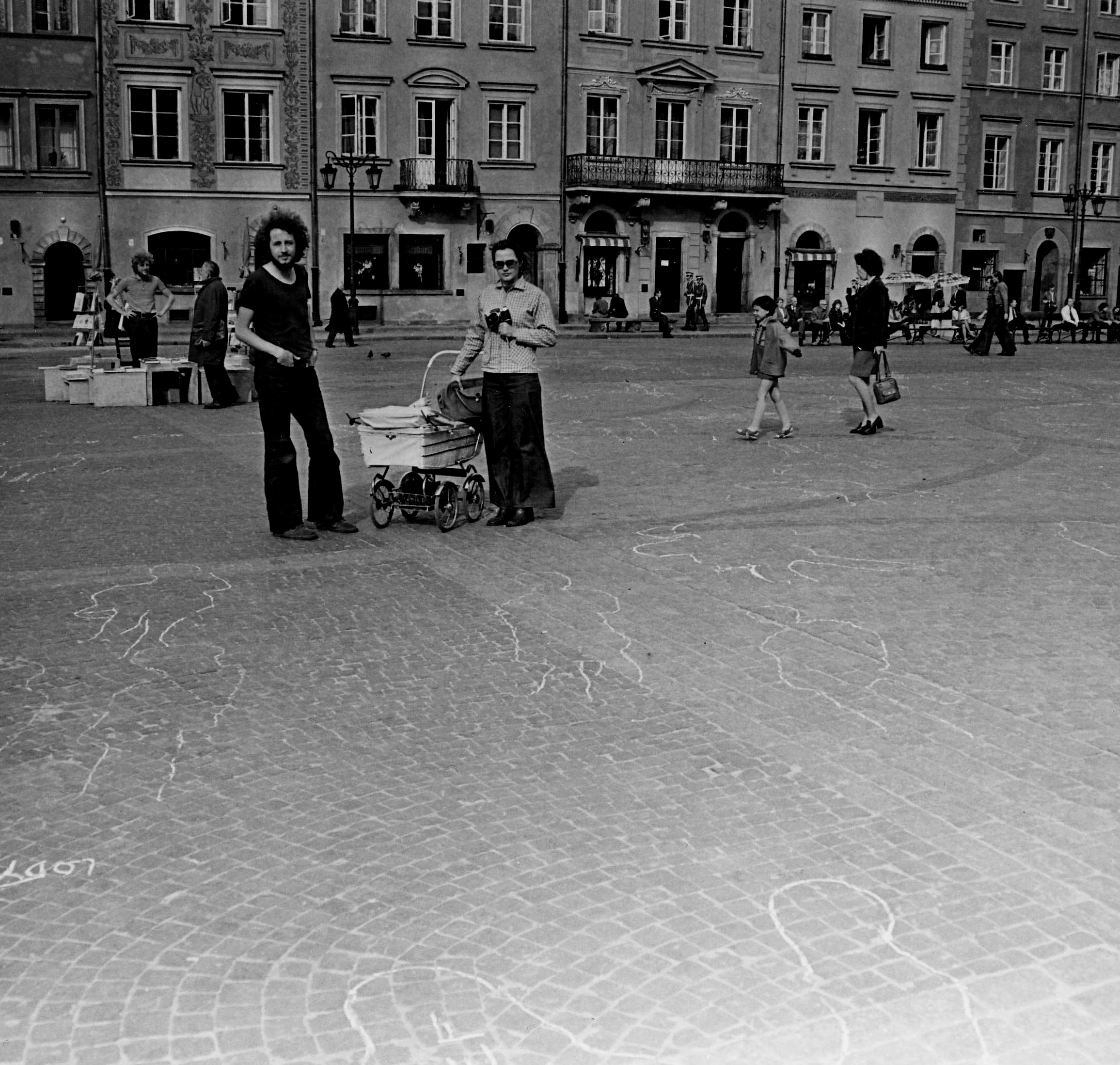The collection of art on the streets in Poland is an original collection of photographic documentation of various art forms and objects, from posters, murals, and stencil graffiti, through metal sculptures, installations, flags, and banners, to the most fleeting prints on clothes, happenings, performances, concerts. Their common feature is the fact that they all occurred on the streets. This broad common denominator is indicated in the concept of ‘art on the streets’ coined by Tomasz Sikorski, much wider than ‘street art’, ‘graffiti’, ‘writing’, ‘public art’ and covering all these categories to a lesser or greater extent. So these are works created legally and illegally, considered as art and treated as vandalism. The phrase ‘art on the streets’ also connotes certain freedom or nonchalance of this work, its independence from decorative, commercial or propaganda functions.
Sikorski made his debut as an artist in the early seventies – as a student at the Academy of Fine Arts, he participated in the artistic events organized by Warsaw’s neo-avantgarde circles. These events took place on the streets many times, as were the activities of Marek Konieczny, Paweł Freisler, Academy of Movement (Akademia Ruchu), Ewa Partum or Anastazy Wiśniewski – happenings, concerts, performances and other, variously named and defined actions. In these years, in Warsaw, Elbląg, and other cities, abstract, neo-constructivist metal forms were created, a sign of cooperation between artists and metallurgical factories, but also an expression of creators’ interest in shaping the visual space of Polish cities. Sikorski documented these new trends in art, closely watching the changes in the urban landscape of socialist Poland.
When in 1984, Sikorski for the first time moved to the USA, on invitation from the Kent State University, he stayed in the country until September 1985, working as a bicycle messenger in New York City for the most of the time. On the streets of the NYC, he ran across the graffiti, a fresh, quite novel cultural phenomenon. After the return to Poland Sikorski presented his photos of New York graffiti in Dziekanka Workshop (Pracownia Dziekanka) in November 1985, and later in other cultural institutions, everywhere arousing a great stir and enthusiasm. Meanwhile, the graffiti became an attractive mean of expression in Poland – the dwarfs painted by hand on the walls by ‘Major’ Waldemar Fydrych and his comrades as early as under the martial law could serve as an example. At the end of 1985, Sikorski as one of the first Polish artists, beside Faustyn Chełmecki, Alexander Sikora (Gallery ‘Non Gallery’), Jacek ‘Ponton’ Jackowski, and Aleksander ‘Olo” Rostocki, started making artistic stencil graffiti on the streets (earlier the templates were used by artists to create posters, magazines, and other artistic prints). During the next years, Sikorski was an artist active in the public spaces, making performances, installations, and other forms, as well as documented manifestations of creativity on the streets.
The collection of art on the streets in Poland from 1962 to 2015 and the theoretical conception elucidating it was created in 2015. The collection is systematically extended by its creator who includes into the collection of some items from other artists and their documentation of the art pieces and actions on the streets. Sikorski plans to elaborate a publication specifically on the art on the street – the third book after the Graffiti w Polsce 1940-2010 (together with Marcin Rutkiewicz) and Wild Graphics. Half a Century of Visual Diversion in Poland 1967-2017 (edited by Michał Warda) about the question of street art, graffiti, and art on the streets.
Sources:
Dzika grafika. Pół wieku ulicznej dywersji wizualnej w Polsce 1967-2017, red. Michał Warda, Muzeum Plakatu w Wilanowie, Warszawa 2017.
Tomasz Sikorski, Marcin Rutkiewicz, Graffiti w Polsce 1940-2010, Carta Blanca, Warszawa 2011.

